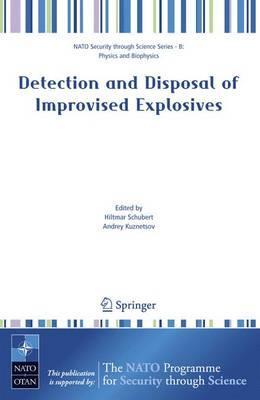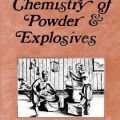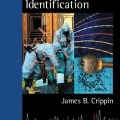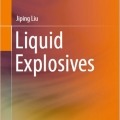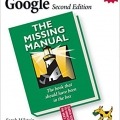درباره کتاب «بازیابی و انهدام مواد منفجره بهبود یافته» Detection and Disposal of Improvised Explosives از سایت Amazon
These proceedings contain the presentations and results of several discussions of the workshop on “Detection and Disposal of Improvised Explosives” held in St.-Petersburg, Russia, September 7-9, 2005. This Advanced Research Workshop was the fourth event concerning Detection of Explosives in connection with counter terrorism. After the first three workshops, dealing with vapor and trace detection, electronic nose detection and detection of bulk explosives, this workshop was devoted to the detection of Improvise Explosives including: Methods of detection of Improvised Explosives (IE). Methods of detection of Improvised explosives devices (IED). Disposal and safe handling of ID and IED. The treatment of detection methods may be divided in the following groups: Overview about the different methods; Trace- and vapor detection; Electromagnetic methods; Neutron methods; Laser techniques. Because of different definitions of Improvised Explosives the parti- pants of the workshop agreed after some discussions with the following definition: An Improvised Explosive (IE) can be any chemical compound or mixture capable of an explosive reaction. They are normally easily prepared by a knowledgeable layman under simple conditions. Components of IE are typically inorganic salts containing molecular bound oxygen like nitrates, chlorates or perchlorates etc. or organic compounds with nitro-, nitami- or nitrate-groups or peroxides. Admixtures of military or commercial explosive materials are also used. From the chemical point of view IE can be divided into the following types: Salts containing chemical groups with oxygen (like nitrates, chlorates or perchlorates etc.) in mixtures with combustible substances like carbon-hydrogen compounds.
سرفصل های اصلی کتاب «بازیابی و انهدام مواد منفجره بهبود یافته»
- Disposal Of Improvised Explosives And -Devices, Hiltmar Schubert, Pages 1-6
- Detection Of Improvised Explosives (Ie) And Explosive Devices (Ied), A.V. Kuznetsov, O.I. Osetrov, Pages 7-25
- On-Site Analysis Of Explosives In Various Matrices, John Reynolds, Peter Nunes, Richard Whipple, Armando Alcaraz, Pages 27-32
- Ieds Detection By Existing Detection Techniques, Petr Mostak, Miroslav Stancl, Pages 33-41,
- Microwave System For Inspection Of Luggage And People, Valery Averianov, Igor Gorshkov, Andrey Kuznetsov, Alexey Evsenin, Pages 43-50
- Development Of Methods And Equipment For Detection Of Explosives’ Vapors In The Atmosphere With Laser, Sergey Bobrovnikov, Pages 51-68
- Detection Of Improvised Explosives Devices (Ied) By Using Tagged Neutron Beams, S. Pesente, M. Lunardon, G. Nebbia, G. Viesti, Pages 69-85
- Senna — Portable Sensor For Explosives Detection Based On Nanosecond Neutron Analysis, D.N. Vakhtin, I.Yu. Gorshkov, A.V. Evsenin, A.V. Kuznetsov, O.I. Osetrov, Pages 87-96
- Liquid Blast Inhibitors: Technology And Application, M. Silnikov, A. Mikhailin, N. Vasiliev, V. Ermolaev, V. Shishkin, Pages 97-103
- Rational Detection Schemes For Tatp Nato Advanced Research Workshop, Faina Dubnikova, Ronnie Kosloff, Yehuda Zeiri, Pages 105-112
- Peroxide Explosives, Jimmie Oxley, James Smith, Pages 113-121
- Associated Particle Imaging: An Enabling Technology Of Detection Of Improvised Explosives, Gary W. Carriveau, Pages 123-125
- Experience Of Application Of Explosives Detectors By Forensic Science Units Of The Ministry Of Interior Of Russian Federation, Yuriy Tuzkov, Pages 127-130
- Technical Masking Of Improvised Explosive Devices, Jaroslav Turecek, Pages 131-142
- Research And Development On Humanitarian Landmine Detection System By A Compact Discharge-Type D-D Fusion Neutron Source, Kai Masuda, Kiyoshi Yoshikawa, Yasushi Yamamoto, Teruhisa Takamatsu, Seiji Shiroya, Tsuyoshi Misawa Et Al., Pages 143-152
- Detection Of Nitroaromatic Derivatives By Using Reactive Organic Thin Layers, Pierre Charrue, Lionel Hairault, Didier Mathieu, Pages 153-190
- Detection Of Explosives By Quadrupole Resonance Method: New Aspects For Security, T.N. Rudakov, T.J. Rayner, P.A. Hayes, K.L. Russeth, Pages 191-204
- Concealed Explosives Detector Based On Portable Neutron Generator, Oleg V. Bochkarev, A.V. Gavryuchenkov, A.M. Polishchuk, A.Yu. Udaltsov, D.N. Vakhtin, A.V. Evsenin Et Al., Pages 205-216
- Possibilities Of Creating Improvised Explosives And Explosive Devices, Smirnov V.V., Pages 217-221
- Investigation Of Possibility To Detect The Detonators Of The Explosive Devices By Means Of Ed Xrf Approach, V.I. Koudryashov, A.S. Serebryakov, V.V. Smirnov, Pages 223-226
- Effect/Background Correlations In Nanosecond Neutron Analysis, M.D. Karetnikov, K.N. Kozlov, E.A. Meleshko, I.E. Ostashev, G.V. Yakovlev, C.A. Korotkov Et Al., Pages 227-236
- Use Of Non-Linear Junction Detectors To Ensure The Safety Of Ied Search, V.N. Tkach, G.N. Shcherbakov, Pages 237-23
مشخصات کتاب «بازیابی و انهدام مواد منفجره بهبود یافته»
- عنوان اصلی کتاب: Detection and Disposal of Improvised Explosives
- نویسندگان کتاب: Hiltmar Schubert, Andrey Kuznetsov
- زبان کتاب: انگلیسی
- سال نشر کتاب: ۲۰۰۶
- قیمت کتاب در سایت آمازون: ۱۱۸ یورو
- رمز فایل: DMaktab.ir (به کوچک و بزرگ بودن حروف دقت فرمایید)
بازدیدها: 59
